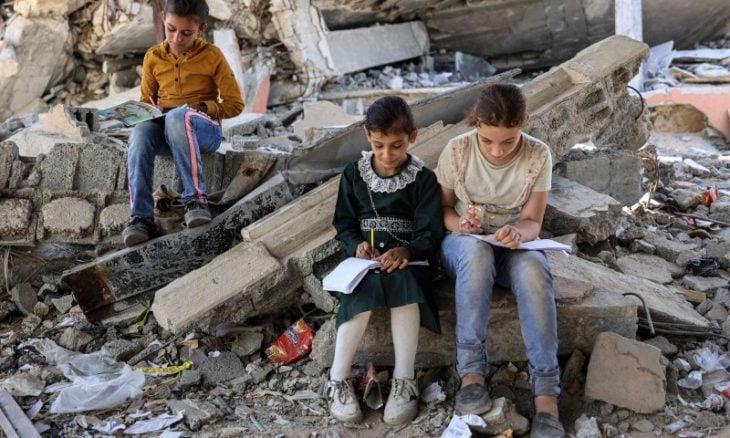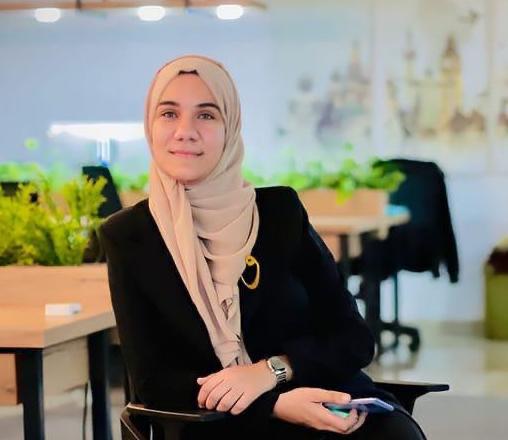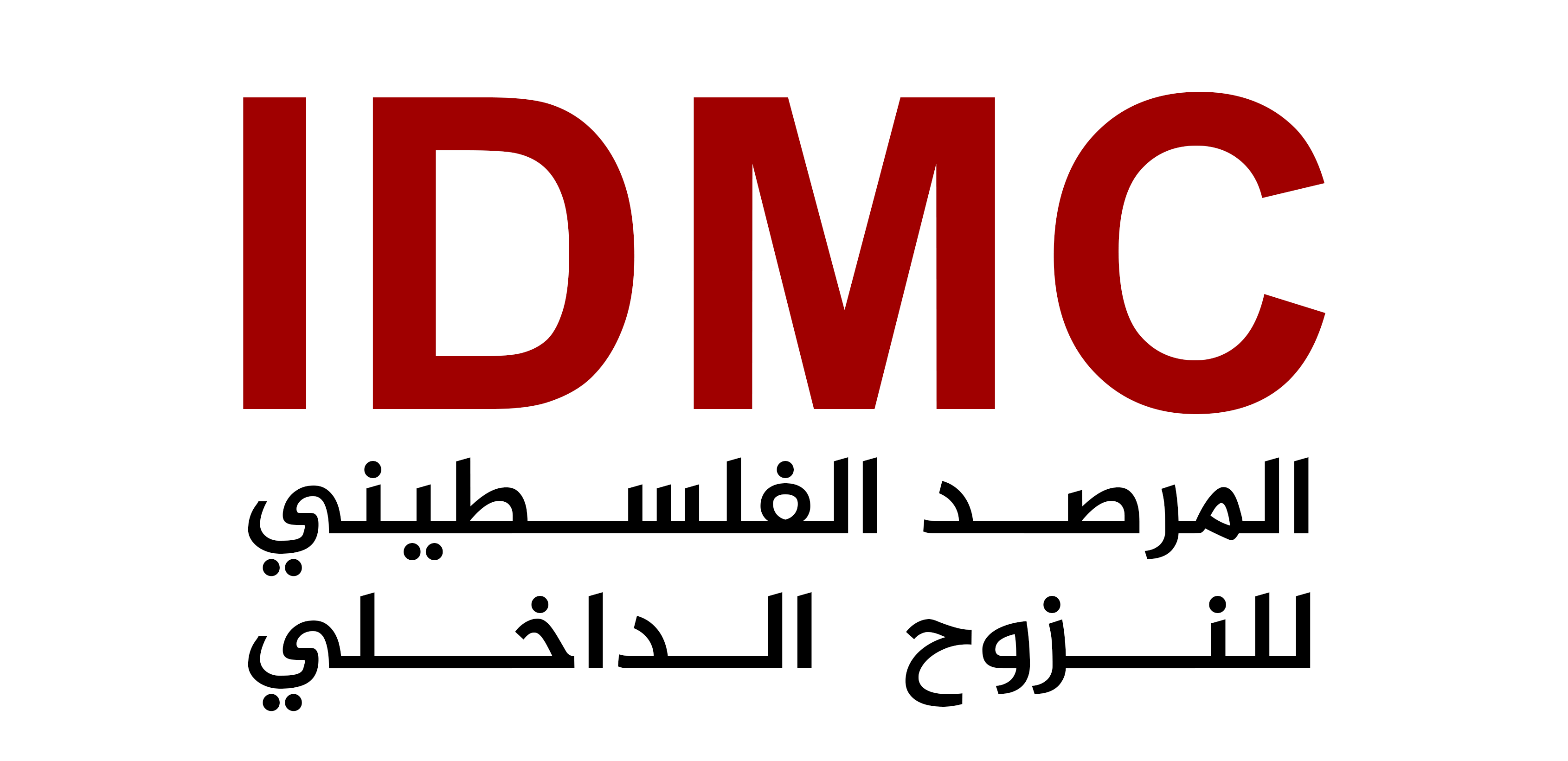
Education in Displacement Centers: Hardships and an Uncertain Future
On October 7, 2023, the flames of war ignited in the Gaza Strip. The Israeli occupation launched an intense bombing campaign across the region, targeting homes, streets, and civilian infrastructure. Educational institutions were among the many civilian facilities that suffered destruction. Later in October, the Israeli army issued successive warnings urging civilians to move south of Wadi Gaza. This prompted thousands of residents to flee to the central and southern governorates of the Gaza Strip, escaping the brutality of war. These areas soon became overcrowded with displaced families, many of whom sought refuge in schools and converted them into displacement centers.
Students arrived this time with the same backpacks—but instead of books, they carried clothes, supplies, and burdens heavier than their years. A reality that would leave a lasting impact, replacing memories of school and learning with scenes of makeshift shelters and the sound of gathering firewood.
Educational Institutions: Between Destruction and Shelter
Gaza has long been known as one of the most educated regions in the world relative to its population. Educational institutions are widespread and enjoy high enrollment rates. According to the Palestinian Central Bureau of Statistics (PCBS), Gaza was home to 796 schools in 2023, including public schools, schools run by the United Nations Relief and Works Agency (UNRWA), and private institutions.
Since the onset of what has become a war of extermination, Israel has followed a systematic policy of destruction, indiscriminately targeting universities and schools. Nearly 88% of Gaza’s schools have been directly bombed, with 61% either completely destroyed or severely damaged. The remaining schools have largely been repurposed as shelters for displaced families, rendering them unfit for educational use. As a result, over 625,000 Palestinian students have seen their education come to a halt, according to the United Nations Office for the Coordination of Humanitarian Affairs (OCHA).
The Israeli military’s violations didn’t stop at destruction. During successive ground incursions, it turned several partially damaged schools into military outposts and battle zones. Israeli airstrikes carried out massacres in schools, universities, and kindergartens that were serving as shelters for thousands of displaced civilians. In addition to using these institutions for military purposes—including detention and interrogation—Israeli forces also committed mass executions of civilians inside school buildings, turning courtyards into mass graves.
The Reality of Education in Displacement Centers
At the start of the academic year, over 600,000 school students were expected to return to their classrooms, including about 60,000 high school students and 87,000 university and college students. Instead, education has been suspended since October 7, 2023. Students and teachers alike became displaced, gathering firewood, searching for drinking water, standing in bread lines and soup kitchen queues, and struggling to survive. Many have faced multiple waves of displacement and direct attacks on the very centers they sought refuge in.
According to the Ministry of Education, over 400 teachers and educators have been killed, in addition to more than 450 university staff and administrators. Another 2,703 educational professionals have been injured. Students have fared no better: more than 12,000 have been killed and approximately 25,000 wounded—many with life-altering injuries such as limb amputations.
Ahmed Abu Shamala, a displaced student from the Karama area in northern Gaza, shared:
“I fled with my family on foot through the so-called ‘safe corridor’ to the Rafidah School shelter in Deir al-Balah. Since then, I haven’t held a single book or read a single word. Survival—food and water—was far more urgent than education.”
He added:
“We lacked every necessity. We searched for books, paper, and plastic sheets to use for fire and heating. We had only summer clothes, no blankets, no winter clothing. We burned school furniture—chairs and desks—to stay warm.”
With a bitter smile, he said, “The schools were stripped of wood.”
He continued, “A few months later, the Israeli occupation bombed our shelter. It wasn’t the last time—they targeted it more than five times, killing many of my friends. A single question haunts me: Will I survive?”
Deprived of his education, Ahmed added, “How could I go to school during a war for lessons when I was starving, terrified, and displaced?”
After eleven months without schooling, many teachers began setting up informal educational tents to gradually reintroduce children to learning and ease their psychological trauma. In one of these displacement camps on Gaza’s southern coast, a young woman named Nour Jaber—formerly a kindergarten teacher—opened a makeshift classroom inside her tent. Around her, barefoot children in worn-out clothes gathered to learn.
“After more than a year of absence from the classroom, I decided—on my own initiative—to turn this displacement tent into a learning space, using the few resources available,” said Nour.
“It started with teaching my relatives’ children letters and numbers. Word spread, and soon we had over 300 students.”
She added, “We suffer from the heat and overcrowding, so I teach in multiple shifts. The tent is far from ideal, but it’s a way to hold on.”
Nour explained that they teach basic subjects while also addressing values, behavior, and trauma through drawing and play-based therapy. “Even entertainment doesn’t appeal to the children,” she said. “They are deeply traumatized. When they hear the water truck’s horn, they immediately run out of the tent, carrying their jugs to wait in line.”
Lina Asfour, a mother, said: “I enrolled my children in one of these educational initiatives hoping they wouldn’t forget how to read and write. I haven’t seen much academic improvement, but I’ve noticed some emotional relief.”
According to the World Health Organization (WHO), 60% of children in Gaza suffer from psychological disorders due to trauma and displacement.
Elsewhere, Salwa Madi, the mother of a first-grader named Abdullah, sits in her nylon-and-wood tent, repeating the alphabet and short Quranic verses. “My child attends a tent classroom, but it’s not enough. That’s why I’ve taken on teaching him myself—Arabic, addition, and subtraction,” she explained.
“We struggle with the high cost of school supplies and the lack of printed materials, notebooks, and textbooks—not to mention the weak internet.”
Amani Nasr has different concerns:
“I’m terrified to send my children to the educational tents. What if they get hit? These initiatives don’t offer real education—just an hour of play. That’s why I teach them at home, even though it’s hard. My children don’t accept me as both their mother and teacher.”
Some mothers, however, try to cling to hope. The mother of Maria Nour Al-Din said:
“These educational initiatives give us a glimmer of hope amid the darkness. But they’re no substitute for formal schooling. We need to end the war and get students back to school—even if it’s just tents or the ruins of their old schools.”
The Return to Education: Between In-Person and Virtual Learning
After a ceasefire was declared, displaced families began returning to what remained of their homes, and efforts began to clear out schools previously used as shelters. Some educational institutions and universities announced the resumption of classes. In February 2025, the Ministry of Education launched the new academic year (2024–2025) with a plan to compensate for over 15 months of lost education. Classes initially resumed in the less-damaged schools of Nuseirat, in central Gaza.
According to OCHA, “About 88% of Gaza’s schools were directly bombed, with 61% completely destroyed or severely damaged, disrupting the education of more than 625,000 Palestinian students.”
Hundreds of students returned to damaged schools, tent classrooms, or virtual classes. The Ministry set up "educational tents" to offer a basic learning environment for students who lost their schools. The current curriculum focuses on core subjects—Arabic, English, and Mathematics—due to a shortage of teachers and educational materials.
Hanine Matar, a high school student, said:
“These plans are pointless. They offer nothing but automatic promotion to the next grade.”
The Ministry also introduced a plan to merge the 2023–2024 and 2024–2025 academic years into one condensed year, cutting down curricula to essential skills and key units. On February 23, 2025, the Ministry launched its “Virtual Classrooms” initiative to support students who cannot attend the in-person tent classes, using platforms like Teams and WISE School.
However, the plan faced criticism.
“No, virtual classes don’t work,” said Nour Abdel Aal, a mother. “Internet is weak. We don’t have devices. And even if we did, charging them is expensive—especially in winter. We rely entirely on solar power.”
Khaled Shaqoura agreed:
“I can’t afford to buy tablets or smartphones for my children. Our phones broke during the war. Even when we have internet or electricity, it’s unreliable.”
He added, “Destroying our schools isn’t just about infrastructure—it’s also about destroying minds. These virtual classrooms don’t work. Anyone could take tests or complete assignments for the students. That makes me deeply worried about my children’s future.”
A Future Unknown
Less than a month after classes resumed, the Israeli occupation reignited its war of extermination on March 18, 2025. Education was once again suspended indefinitely. Palestinians returned to displacement and once again sought shelter in schools.
According to UNICEF, "Children in Gaza may lose the equivalent of five full years of education"—a devastating blow to an entire generation’s future.
While students and teachers continue to resist and find ways to adapt, urgent questions remain: How can we rebuild a sustainable educational system amidst war and destruction? And what does the future hold for a generation raised in the shadow of violence, displacement, and an uncertain destiny?

Waad Abu Zaher
Independent journalist from the Gaza Strip
 English
English

